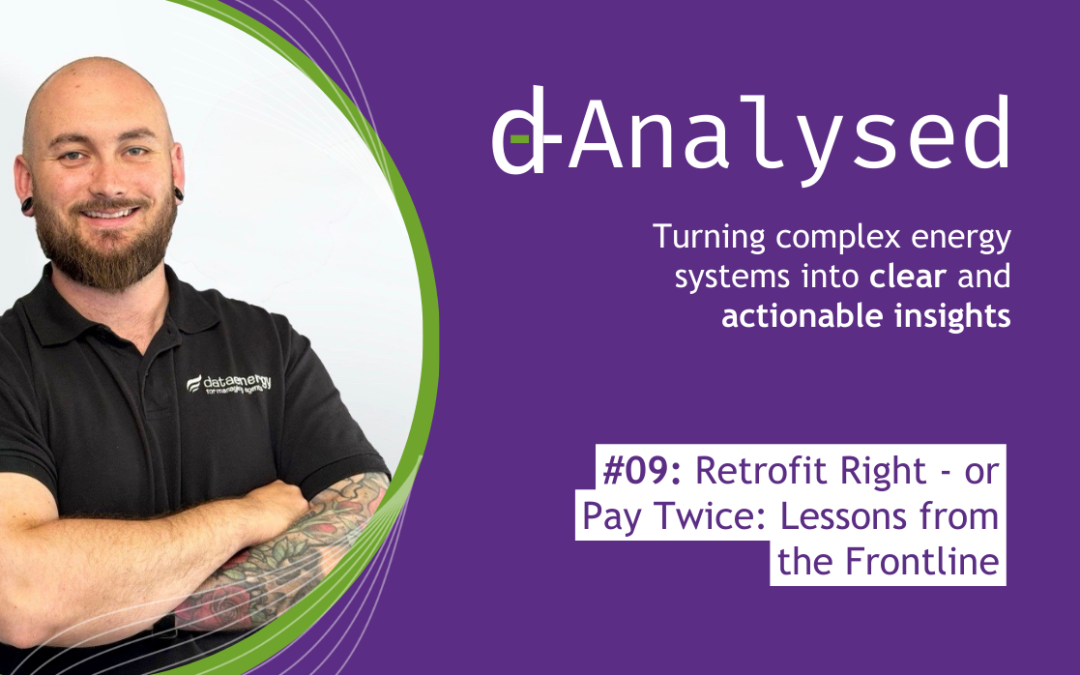Retrofitting a heat network is rarely a simple “plug-and-play” job. Every building has quirks, every plant room has a history, and every retrofit has the same core challenge: upgrading to modern performance and compliance standards without blowing the budget or disrupting residents’ daily lives.
For property managers, the reasons to retrofit vary – replacing failing equipment, improving energy efficiency, bringing an older scheme up to current regulations, or enabling services like prepayment. Whatever the driver, the decisions made at the earliest stage can determine whether the project runs smoothly or turns into an expensive, time-consuming fix-up.
And with the Heat Network Technical Assurance Scheme (HNTAS) setting higher expectations for metering, billing, and performance monitoring, the stakes have never been higher.
When the Wrong Protocol Brings a Project to a Halt
One recent project needed a prepayment system for residents to top up credit for heat and hot water. The design team chose wireless M-Bus as the communication protocol between meters and the data system. On paper, it seemed ideal: proven, affordable, and no need for extra cabling.
But prepayment isn’t about “good enough” communication – it relies on instant, two-way updates to reconnect supply after a top-up or shut it off when credit runs out. Wireless M-Bus simply couldn’t keep up:
- Top-ups took hours to register
- Disconnections lagged, allowing usage beyond credit limits
- The whole data layer had to be ripped out and replaced just weeks after installation
Impact on residents:
- Delayed reconnections caused frustration, complaints, and temporary loss of heating or hot water for some households.
Impact on budget:
- Replacing the just-installed system added unplanned contractor visits, programme delays and significant extra cost.
A thorough site survey is the best insurance policy against costly mistakes. Beyond measuring pipe runs, it should test communication feasibility, confirm compatibility of existing kit, check for power/network availability and flag regulatory gaps.
Even a desktop survey – working from technical drawings – can spot early risks. At this site, it would likely have highlighted that wireless M-Bus couldn’t deliver the responsiveness needed for prepayment, avoiding months of rework.

Best Practice We’ve Seen Work
From multiple retrofits, a few clear principles stand out:
Engage specialists early
Involve metering/data experts before locking in specs.
Design for prepayment from day one
Choose protocols built for two-way comms.
Plan for the future
Even if prepayment isn’t needed now, build in capability.
Test in the real world
Lab results don’t always match site conditions.
Look at lifecycle costs
The cheapest install can be the most expensive to maintain.
Collaboration Makes Compliance Easier
Meeting HNTAS and other regulations isn’t just about ticking boxes – it’s about designing a system that works today and can adapt tomorrow. That’s why we work with technology partners who bring integration expertise, regulatory insight and on-site problem solving.
When design, compliance and real-world constraints align from the outset, retrofits run smoother, residents get a reliable service from day one, and the budget stays under control.

Final Thoughts
Plan your retrofit with confidence
If you’re planning a heat network retrofit – or suspect your metering, billing, or data systems may fall short of new compliance standards – we can help you get it right first time.
Our team works with property managers and technology partners to design, survey and deliver retrofit solutions that meet HNTAS requirements, protect your budget and keep residents happy.
Get in touch to arrange a Retrofit Compliance Review.
Email daniel.davies@dataenergy.co.uk
Got a Heat Network Challenge? Ask Daniel.
Have a question you’d love to see covered in a future post? Submit it below and Daniel might just take it on.
If you found this useful, we’re just getting started.
Subscribe for future insights from our Technical Project Consultant, Daniel Davies – tackling the real-world challenges of compliance, performance and fair billing.


